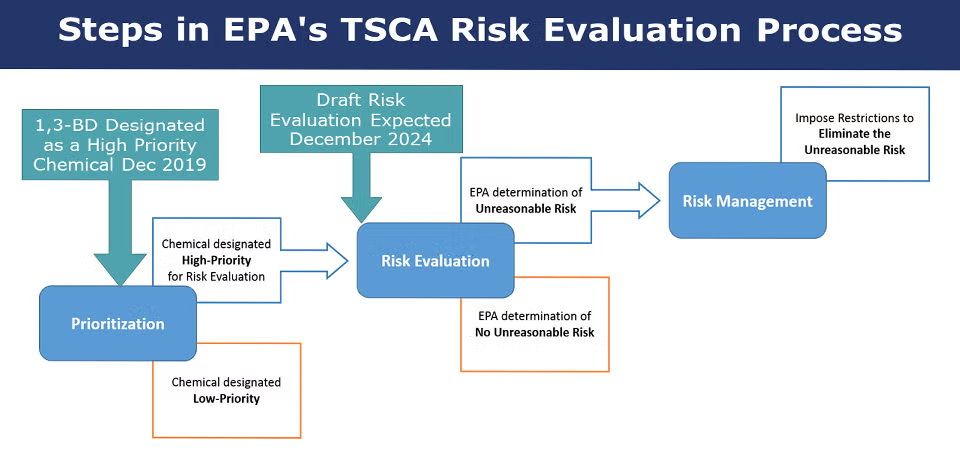1, 3-Butadiene was identified as a high-priority candidate chemical for TSCA risk evaluation. It is important to note that a designation of 1, 3-Butadiene as a high-priority chemical “does not constitute a finding of risk” and should not be cause for concern. A high-priority designation simply means the EPA has nominated 1, 3-Butadiene for further risk evaluation.
1,3-Butadiene TSCA Risk Evaluation Consortium


Source: Image adapted from EPA
The ACC Olefins Panel has a long history of conducting scientific research and communicating critical information to stakeholders including regulatory agencies in the U.S. and abroad to better understand the hazards and risks potentially associated with exposures to 1,3-Butadiene. The Panel’s efforts have included scientific research evaluating potential associations between 1,3-Butadiene and cancers and quantifying thresholds for 1,3-Butadiene exposure.
It is critical for stakeholders to play an active role in the TSCA risk evaluation process and maximize all the opportunities to provide input to EPA. In an effort to share costs and promote efficiency, 1, 3-Butadiene stakeholders have formed a consortium to collaborate on the development of comments and generate relevant data and information to inform the EPA TSCA risk evaluation.
The Panel and the ACC 1,3-Butadiene TSCA Risk Evaluation Consortium are committed to Responsible Care®. Additionally, the Panel has updated its factual product stewardship manual with important information regarding the uses and handling of 1,3-Butadiene (CAS # 106-99-0).
Learn More
To learn more about the TSCA risk evaluation process and the formation of the 1,3-Butadiene TSCA Risk Evaluation Consortium, download our one-pager.